The Zig Zag indicator, a powerful tool in the arsenal of traders, offers a streamlined method for analyzing market dynamics and spotting crucial price levels.
By following a structured approach encompassing seven key steps, traders can unlock the potential of this indicator to enhance their decision-making process.
From the basics of understanding its functionality to fine-tuning parameters for precision, each step contributes to a comprehensive strategy for utilizing the Zig Zag indicator effectively.
As we delve into these simplified steps, traders can gain valuable insights into maximizing their trading performance and achieving consistent results in the dynamic world of financial markets.
Understanding Zig Zag Indicator Basics
In the realm of technical analysis, grasping the fundamental principles of the Zig Zag Indicator is paramount for traders seeking to navigate price action trends with precision and clarity. This indicator plays a crucial role in identifying significant price movements while filtering out short-term fluctuations, making it a valuable tool for traders focusing on swing trading strategies.
By highlighting swing highs and lows, the Zig Zag Indicator simplifies trend analysis, aiding traders in recognizing support and resistance levels effectively. Particularly beneficial for price action traders and those utilizing Elliott Wave Analysis, this indicator strategy helps in spotting wave patterns within the price movements.
Understanding the basics of the Zig Zag Indicator is essential for traders looking to enhance their trading decisions by gaining insights into the trend dynamics and key price levels that influence market movements. By incorporating this indicator into their trading arsenal, traders can make more informed decisions based on the identified trends and patterns.
Setting Up Zig Zag Indicator
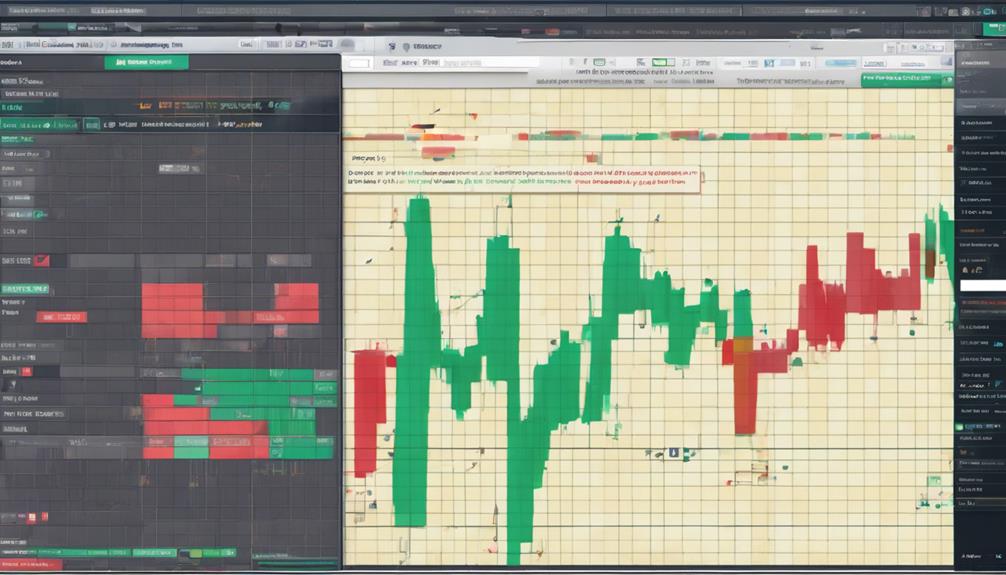
When establishing the Zig Zag Indicator, it is crucial to configure the indicator settings to a specific percentage that suits the price movements being analyzed. This percentage will determine the sensitivity of the indicator to price swings.
Indicator Configuration
How can the Zig Zag indicator be effectively configured to enhance trend identification and minimize minor price fluctuations?
The key lies in setting up the indicator with the appropriate percentage value to filter out insignificant price movements.
Here are three essential steps to configure the Zig Zag indicator for optimal use:
- Adjust the Percentage Value: Set the percentage value between 5% and 10% to define significant price swings accurately.
- Filter Minor Price Fluctuations: Utilize the indicator's settings to eliminate noise caused by minor price movements, enhancing the clarity of trend identification.
- Visualize Significant Reversals: By configuring the Zig Zag indicator correctly, you can visualize and analyze significant price reversals on the chart effectively.
Understanding Price Swings
Understanding price swings is crucial for effectively setting up the Zig Zag Indicator as it plays a pivotal role in identifying significant price movements above a specified percentage threshold. Price swings are vital for determining trend reversal points and setting the sensitivity of the indicator through the percentage parameter.
By monitoring price swings, traders can pinpoint important price points where trend direction may change, aiding in making informed trading decisions. The Zig Zag Indicator relies on these swings to plot its lines accurately, offering insights into potential shifts in market momentum.
Therefore, grasping the concept of price swings is fundamental for utilizing the Zig Zag Indicator efficiently and interpreting its signals effectively.
Identifying Trend Reversals
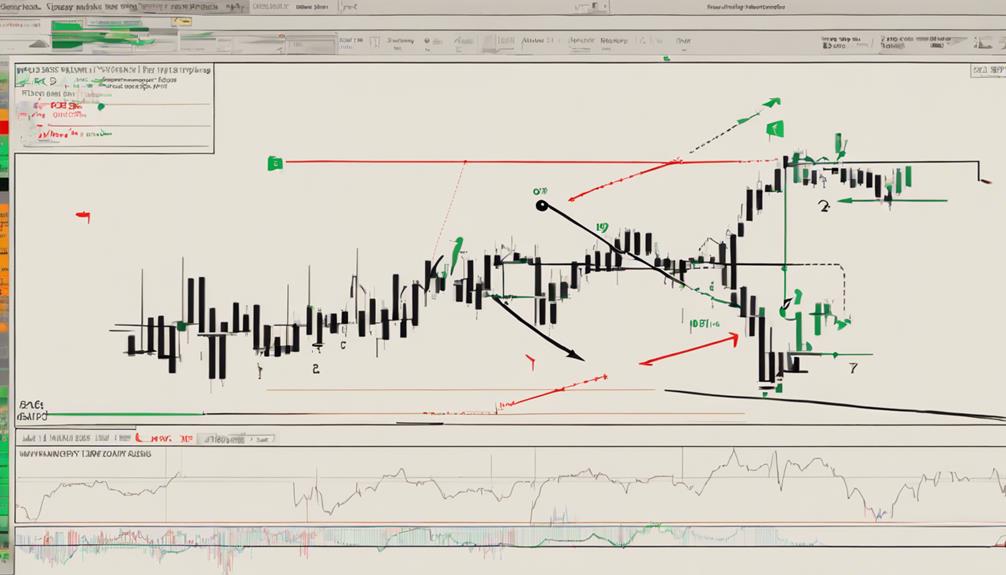
The identification of trend reversals using the Zig Zag Indicator is essential for traders seeking to anticipate shifts in market direction effectively. To identify trend reversals accurately, traders can follow these steps:
- Connecting Significant Price Points: The Zig Zag Indicator connects significant price movements, filtering out noise and focusing on essential price swings that indicate potential trend shifts.
- Visualizing Trend Changes: By plotting reversal points on the chart, the indicator helps traders visualize changes in market direction, confirming the end of one trend and the potential beginning of a new trend.
- Enhancing Trade Management and Decision-making: Understanding how the Zig Zag Indicator identifies trend reversals is crucial for effective trade management and decision-making. It provides traders with valuable insights into market dynamics, enabling them to make informed decisions regarding entry and exit points in the market.
Utilizing Zig Zag for Entry Points
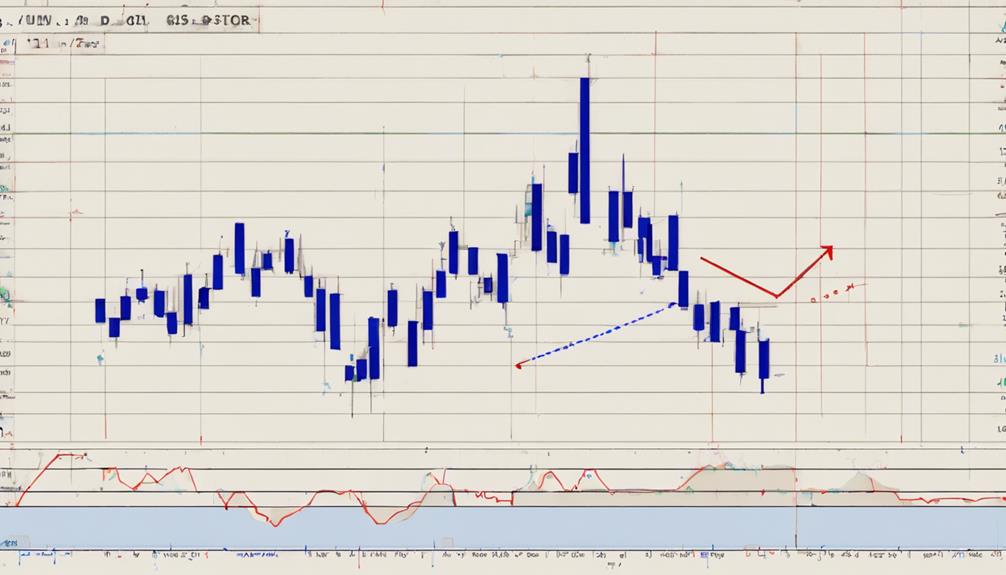
Utilizing the Zig Zag indicator strategically enhances traders' ability to pinpoint optimal entry points in the market based on trend reversals. By identifying swing highs and swing lows on the price chart, traders can utilize the Zig Zag indicator to spot potential price reversals. Observing the points where the Zig Zag lines change direction provides insights into possible entry points when trends reverse.
To increase the probability of successful trades, it is advisable to wait for confirmation from other indicators or price action before acting on Zig Zag signals. Incorporating Zig Zag entry points into a comprehensive trading strategy that includes proper risk management techniques is crucial for maximizing profitability and minimizing losses.
Traders can enhance their decision-making process by combining the Zig Zag indicator with effective confirmation indicators and risk management practices. By adhering to these strategies, traders can optimize their entry points based on trend reversals and improve the overall success rate of their trades.
Implementing Stop Loss and Take Profit
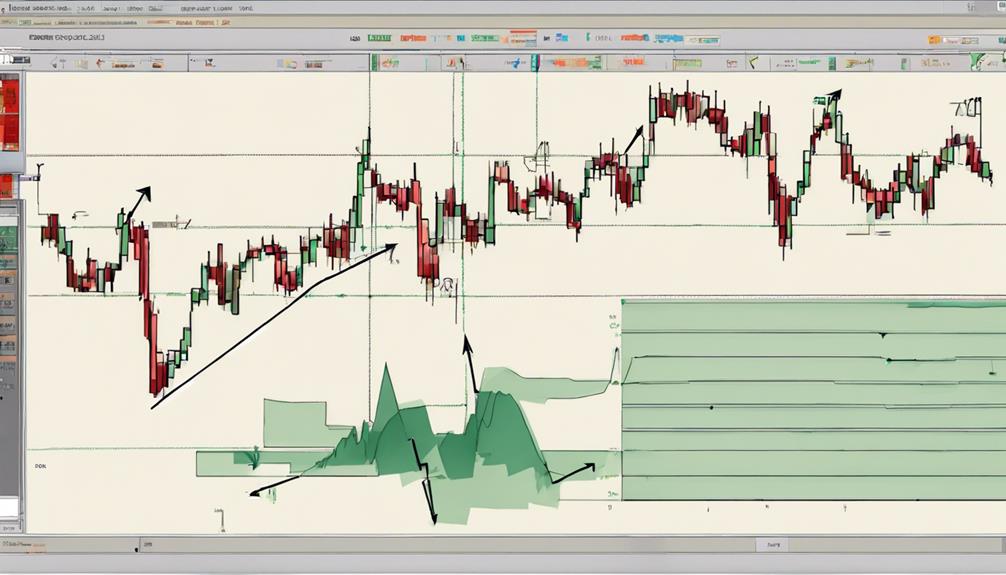
Implementing stop loss and take profit levels based on ZigZag swing points is crucial for managing risk and optimizing trading outcomes.
Setting stop loss orders below swing lows and determining take profit levels near swing highs identified by the ZigZag Indicator ensures a structured approach to risk management.
Set Stop Loss
To effectively manage risk and safeguard trading capital when utilizing the Zig Zag Indicator, setting a stop loss is a crucial step in defining the maximum loss threshold for a trade. When implementing stop loss and take profit strategies with the Zig Zag Indicator, traders can enhance their trade management and risk management practices. Here are three key points to consider:
- Protection Against Losses:
Implementing a stop loss ensures protection against significant losses if the trade moves against expectations.
- Indicator Signals:
Traders can adjust stop loss levels based on the Zig Zag Indicator signals to align with the market conditions effectively.
- Enhanced Discipline:
Utilizing stop loss strategies promotes trading discipline and reinforces risk management practices.
Determine Take Profit
When determining take profit levels in conjunction with implementing stop loss strategies using the Zig Zag Indicator, it is essential to strategically position your profit targets below swing highs to optimize profit capture efficiency. By setting your take profit level below swing highs, you ensure that you capture profits efficiently and at optimal levels indicated by the Zig Zag indicator.
This approach aids in effective trade management, allowing for strategic exits that help minimize losses and improve overall trade outcomes. Implementing stop losses at appropriate levels alongside determining take profit targets based on swing highs ensures that you protect your capital from excessive losses while maximizing potential gains.
Strategic exits based on the Zig Zag indicator can significantly enhance trade outcomes.
Adjust as Necessary
Adjusting stop loss and take profit levels based on market volatility and timeframe is crucial for effective risk management when utilizing the Zig Zag Indicator in trading strategies. To optimize trade exits and protect profits while limiting losses, consider the following:
- Identify Swing Highs and Swing Lows: Utilize the Zig Zag Indicator to pinpoint potential reversal points for setting stop loss and take profit levels.
- Consider Market Volatility: Adjust stop loss and take profit distances according to the current market conditions to account for volatility.
- Strategic Risk Management: Place stop loss levels below swing highs to safeguard profits and manage risk effectively when using the Zig Zag Indicator in your trading approach.
Adjusting Parameters for Accuracy
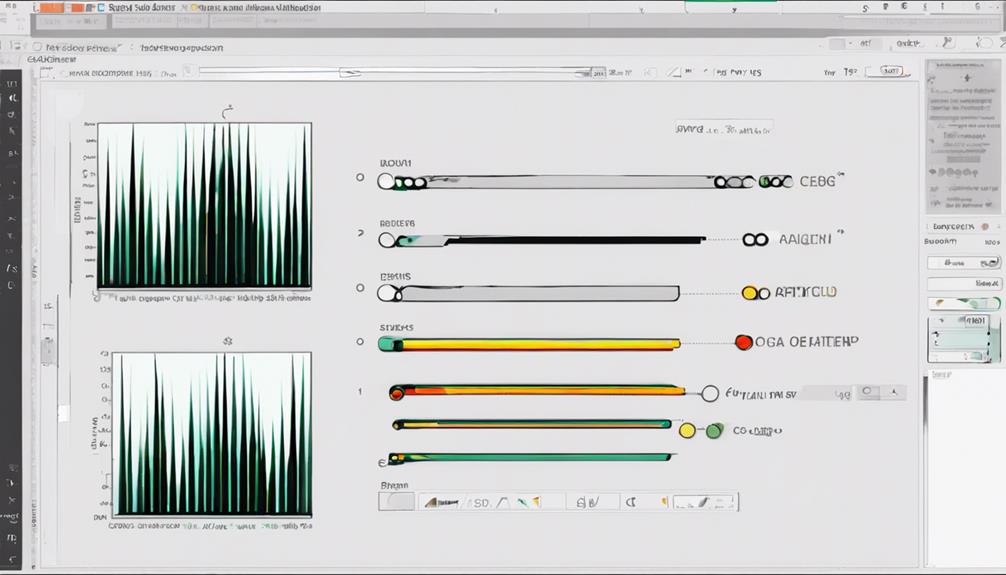
Experimenting with various percentage values between 5% and 10% is crucial for fine-tuning the ZigZag Indicator parameters to enhance accuracy in trend identification across different securities.
The Zig Zag indicator's ability to filter out minor price fluctuations makes it essential for traders to adjust the parameters effectively. By customizing the percentage setting, traders can adapt the indicator to varying market conditions and securities, allowing for more precise trend identification.
It is important to consider market volatility and trading timeframe when adjusting the percentage parameter to optimize the indicator's performance. Depending on the chosen percentage value, traders can control the number of reversal points displayed on the chart.
Increasing the percentage setting reduces the number of reversal points, while decreasing it captures more price movements. Finding the optimal setting through experimentation and considering different market scenarios is key to using the ZigZag Indicator effectively for accurate trend analysis.
Testing and Refining Your Strategy
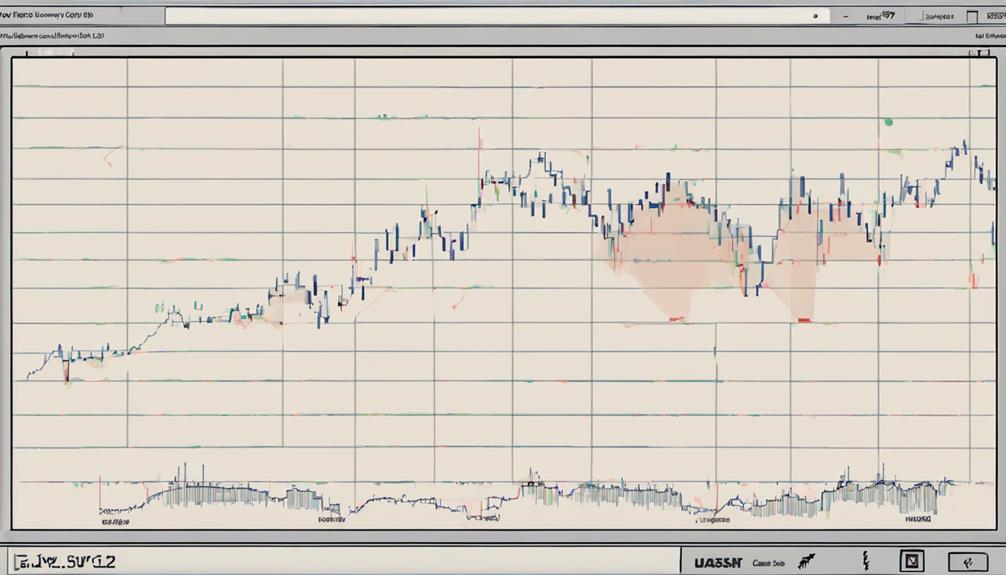
To refine and validate the effectiveness of your trading strategy incorporating the ZigZag indicator, backtesting on historical data is essential for assessing its performance. Once you have conducted backtests, it is crucial to refine your strategy by adjusting the indicator's settings and parameters based on the results obtained.
To further enhance your strategy, consider the following steps:
- Evaluate the effectiveness of your strategy by comparing its historical performance with current market conditions. This comparison can help identify any discrepancies and areas for improvement.
- Incorporate risk management principles into your strategy testing to ensure that your trading outcomes are consistent and controlled. Adjusting your strategy based on risk management principles can help mitigate potential losses.
- Continuously monitor and adapt your strategy to evolving market conditions. By staying agile and responsive to changes in the market environment, you can maintain the relevance and efficacy of your trading strategy over time.
Are the Simplified Steps for Using the Zig Zag Indicator the Same as the Simple Steps for Navigating It?
Yes, the simplified steps for using the Zig Zag indicator are similar to the simple steps for navigating it. Understanding the basic navigating zig zag indicator steps can help traders identify significant price movements and trends, effectively enhancing their trading strategies.
Can I Use the Simplified Steps for Using the Zig Zag Indicator for Navigation as well?
Yes, you can use the simple steps zig zag indicator for navigation. The zigzag indicator helps identify trend changes and potential reversal points, making it a useful tool for navigating the market. By following the simplified steps for using the zigzag indicator, traders can make informed decisions and improve their trading strategies.
Frequently Asked Questions
What Is the Zigzag Line Strategy?
The Zigzag Line strategy is a trading approach that leverages the Zigzag Indicator to pinpoint pivotal reversal points in price trends, aiding traders in identifying significant price movements and potential entry/exit levels for informed decision-making.
How Do You Use a Zigzag Line?
Utilizing the ZigZag line involves tracing significant price reversals to pinpoint trend shifts, aiding in noise reduction for precise analysis. By adjusting percentage settings, traders can adapt to various price movements, simplifying chart patterns for enhanced trend confirmation and entry point determination.
What Is the Best Value for the Zigzag Indicator?
The best value for the Zigzag Indicator, typically set between 5% and 10%, determines its sensitivity to price movements. Traders experiment with different percentages to optimize settings for stocks, balancing noise filtering and reversal capture.
How Do You Trade on Zigzag?
Trading on ZigZag involves interpreting trend reversals and price movements. Utilize reversal points and trend lines for analysis. Combine with other tools for comprehensive decisions. Customize settings for market conditions and timeframe alignment for optimal results.
Conclusion
In conclusion, mastering the Zig Zag indicator in 7 simplified steps can transform your trading strategy and enhance your decision-making process.
By understanding its basics, setting it up correctly, identifying trend reversals, and utilizing it for entry points, you can navigate the market with precision and confidence.
With proper adjustments for accuracy, implementing stop loss and take profit levels, and continuous testing and refinement, you can unleash the full potential of this powerful tool and achieve unparalleled success in your trading endeavors.
